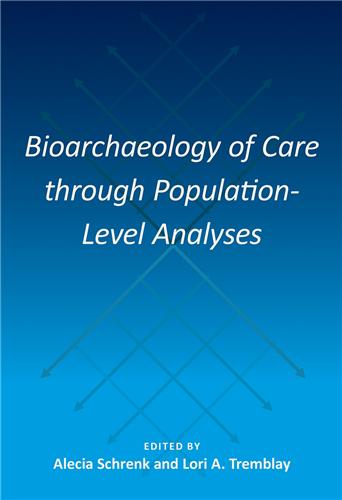Bioarchaeology and Identity in the Americas represents an important shift in the interpretation of skeletal remains in the Americas.
Buy Books: browse by title
A - B - C - D - E - F - G - H - I - J - K - L - M - N - O - P - Q - R - S - T - U - V - W - X - Y - ZPlease note that while you may order forthcoming books at any time, they will not be available for shipment until shortly before publication date
This volume highlights new directions in the study of social identities in past populations. Contributors expand the scope of the field regionally, methodically, and theoretically, moving behind the previous focus on single aspects of identity by demonstrating multi-scalar approaches and by explicitly addressing intersectionality in the archaeological record.
Representing current and emerging methods and theory, this volume introduces new avenues for exploring how prehistoric and historic communities provided healthcare for their sick, injured, and disabled members.
Using evidence from 258 recovered graves from the Passo Marinaro necropolis, Sulosky Weaver suggests that Kamarineans--whose cultural practices were an amalgamation of both Greek and indigenous customs--were closely linked to their counterparts in neighboring Greek cities
Bioarchaeology of East Asia integrates studies on migration, diet, and diverse aspects of health through the study of human skeletal collections in a region that developed varying forms of agriculture.
This work offers a different perspective on Florida’s indigenous tribes, one that is explicitly interdisciplinary in inferring the formation of a new ethnic consciousness among La Florida’s indigenous communities.
Essays in this volume examine borderland settings in cultural contexts that include Roman Egypt, Iron Age Italy, eleventh-century Iceland, and the precontact American Great Basin and Southwest. Contributors look at isotope data, skeletal stress markers, craniometric and dental metric information, mortuary arrangements, and other evidence to examine how frontier life can affect health and socioeconomic status. Illustrating the many meanings and definitions of frontiers and borderlands, they question assumptions about the relationships between people, place, and identity.
From Bronze Age Thailand to Viking Iceland, from an Egyptian oasis to a family farm in Canada, The Bioarchaeology of Individuals invites readers to unearth the daily lives of people throughout history.
This volume offers a novel interdisciplinary view of the migration, mobility, ethnicity, and social identities of pre-Columbian Mesoamerican peoples. In studies that combine bioarchaeology, ethnohistory, isotope data, and dental morphology, contributors demonstrate the challenges and rewards of such integrative work when applied to large regional questions of population history.
These essays address the biological consequences of the arrival of Europeans in the New World and on the lifeways of native populations following contact in the late 16th century.











